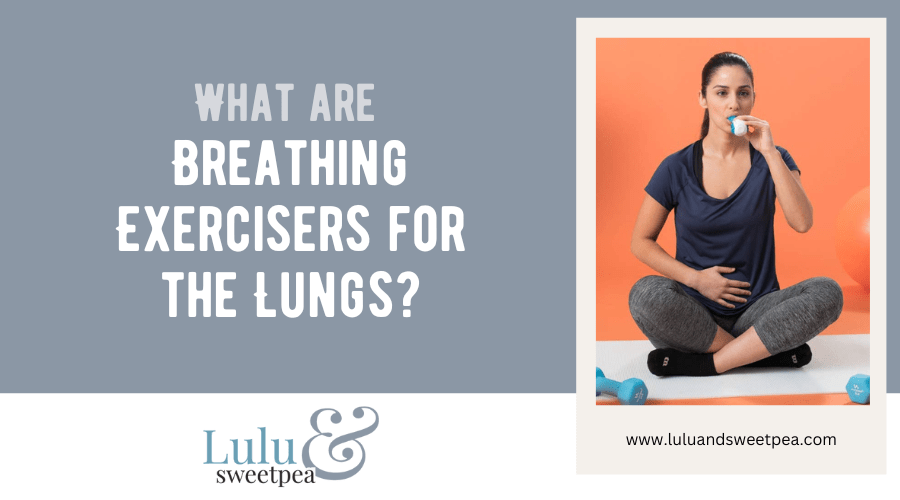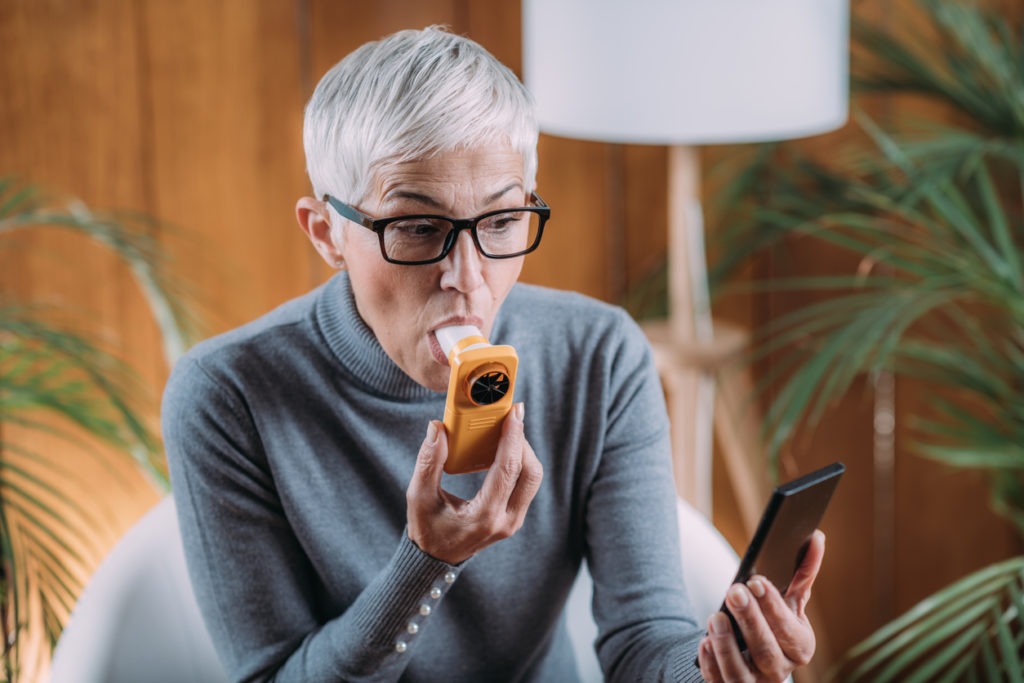We all put much emphasis on working out and exercising all the muscles of our bodies. Still, unfortunately, we forget to pay much attention to exercising one of our most vital organs – our lungs. Strengthening your lungs is as important as strengthening the other muscles in your body.
When you have healthy lungs, breathing is easy and natural. However, if you perform vigorous activities, you may sometimes find yourself catching your breath, and breathing exercisers can help lessen this, especially if you plan to increase your fitness activities or increase your stamina and endurance.
The lungs need to be exercised to perform at an optimum level if you have a medical-related lung disorder or need lung rehabilitation. Athletes also look to exercising their lungs in order to maximize their performances. If done safely, breathing exercisers can be used to increase a person’s lung capacity, build stamina, or practice stress management.
In this article, learn about breathing exercisers and how they can benefit you.
What is a Breathing Exerciser?
Never heard of a breathing exerciser? Well, you’re not alone. Even though these devices have been around for quite some time, their use has been limited to people with lung disorders or those who are in need of lung recovery. But there is a growing interest in incorporating these products into a recreational routine as the technology becomes more affordable and the design becomes more advanced.
A breathing exerciser, also known as a lung exerciser or breathing trainer, is a small device that helps improve the lung’s ability to exchange oxygen and carbon dioxide. It assists with respiratory expansion, which is needed for moving air in and out of the lungs. Through different types of exercises, people who use breathing exercisers can improve the efficiency of their airways, optimizing lung capacity, and strengthen the muscles used to expel foreign particulates and cough. However, results will come only after dedicated use.
These products have designs ranging from bulkier models used in hospitals and clinics for patients needing serious treatment to pocket-sized devices that can be added to a daily routine at home. Preferences in design will be dependent on individual goals when using the product.
A breathing exerciser is a helpful tool if you are struggling or have difficulty breathing due to any medical condition. If you’re conscious about improving lung function, you may be wondering if a breathing exerciser can help you.
How do Breathing Exercisers Work?
Breathing exercisers are like inhalers designed to make breathing harder to help strengthen the lung muscles. Using the device, you activate the diaphragm and the intercostal muscles (located between the ribs) as you breathe in and out. It works by stimulating and further exercising the muscles associated with breathing.
Breathing exercisers are tools for respiratory muscle training (RMT) that focus on the following:
- Building endurance and strength in respiratory muscles
- Creating brain and body connections to enhance conscious and efficient breathing patterns.
By improving the strength and stamina of the lungs and the respiratory system, you can increase performance in playing sports and doing fitness exercises by achieving better oxygen delivery to the body.
Some people can start to feel an improvement after using a breathing exerciser for a week if they have been physically active previously. For others, they may have to wait for a month or longer to really notice a difference.
How to Use a Breathing Exerciser
There are different exerciser models and different ways to use them, but the concept is the same. Each lung exercise provides varying degrees of resistance in airflow, and the user can adjust these based on their abilities. As the lungs get stronger, you can increase resistance. Like training other sets of muscles, it’s best to start slow and build up strength before moving to intense exercises.
Some breathing exercisers require inhaling and exhaling, others one or the other. Some come with pistons for visual reference for resistance, and other models rely on dials to increase or decrease airflow strength.
One type of breathing exerciser is the incentive spirometer, which is a handheld device about the size of a small bottle that you can hold in one hand. Here’s how to use one:
- Sit up straight and tall while holding the spirometer in your hands.
- Take a deep breath. Let it out.
- Put the mouthpiece in your mouth, making sure that your lips are completely covering the mouthpiece.
- Breathe in slowly through the mouthpiece, as if you’re sucking through a straw.
- Keep the range indicator in the target zone, then breathe until the piston reaches your mark.
- Hold your breath for three seconds, then let it out.
- Repeat the process as your doctor prescribes, typically about ten breaths every hour.
Respiratory muscle training works by adding resistance during the inhalation and exhalation phases of breathing. Just like with weight training, the added resistance helps strengthen the muscles your body uses to breathe over time, making it stronger in the process. It’s recommended that you perform breathing exercises once a day for about 5-10 minutes.
Will it Increase Vo2 Max?
Vo2 max (maximal oxygen consumption, maximal oxygen uptake, or maximal aerobic capacity) is the maximum or optimum rate at which the lungs, heart, and muscles can effectively use oxygen during exercise, and it’s used as a way of measuring a person’s individual aerobic capacity.
Aerobic training like running, cycling, swimming, dancing, and another kind of physical exercise can increase an individual’s Vo2 max.
But breathing exercisers can also help improve and increase your Vo2 max if you use them regularly. The advantage is that you won’t need to endure wear and tear on your muscles and joints (unlike with aerobic training). Using these devices is a great option for those who want to maintain their respiratory fitness while injured, for example.
Will it Improve Asthma Conditions?
Different breathing training programs may help people living with asthma. Its main therapeutic benefit is to correct dysfunctional breathing. By learning to breathe better and more effectively, you can alter the way you breathe and become more efficient.
For people with asthma, breathing trainer devices can reduce breathlessness and alleviate symptoms of asthma.
NOTE: Be sure to check with your Doctor before starting with any new lung related activity
Factors to Consider When Buying Breathing Exercisers
Following are a few parameters that you should consider before buying a breathing exerciser for your lungs:
Resistance
This is the most important feature you should look for when purchasing a breathing exerciser. Some versions provide resistance during both inhaling and exhaling, while other models only offer resistance when you inhale.
Also, some exercisers don’t have resistance – they rely on visual cues to strengthen your respiratory muscles, like balls of different colors. If you want to improve your athletic performance, both versions will work great for you. However, suppose you want to improve the symptoms of a medical condition. In that case, you should consider all the options carefully and choose one based on how strong your respiratory muscles are currently and what your goal is.
Mouth Piece
The mouthpiece can drastically affect your experience with the breathing exerciser. It determines comfort, so you should choose it carefully. Some exercisers are flared, meaning they don’t go deep and stay at the entrance of your mouth. However, it would help if you held them in place with your hand.
Other breathing exercisers feature teeth rests that allow you to hold the mouthpiece with just your mouth, keeping your hands free. This also means that you can go deeper into your mouth, which might bother some people. In short, getting the right mouthpiece depends on your personal preference and comfort.
Size
Once you determine the above features, you should consider the size of the breathing exerciser you are going to buy. If you plan to use the device at home only, then the size won’t matter. However, if you want to carry it on the go, opt for a compact option, as it will be much more convenient to travel with.

